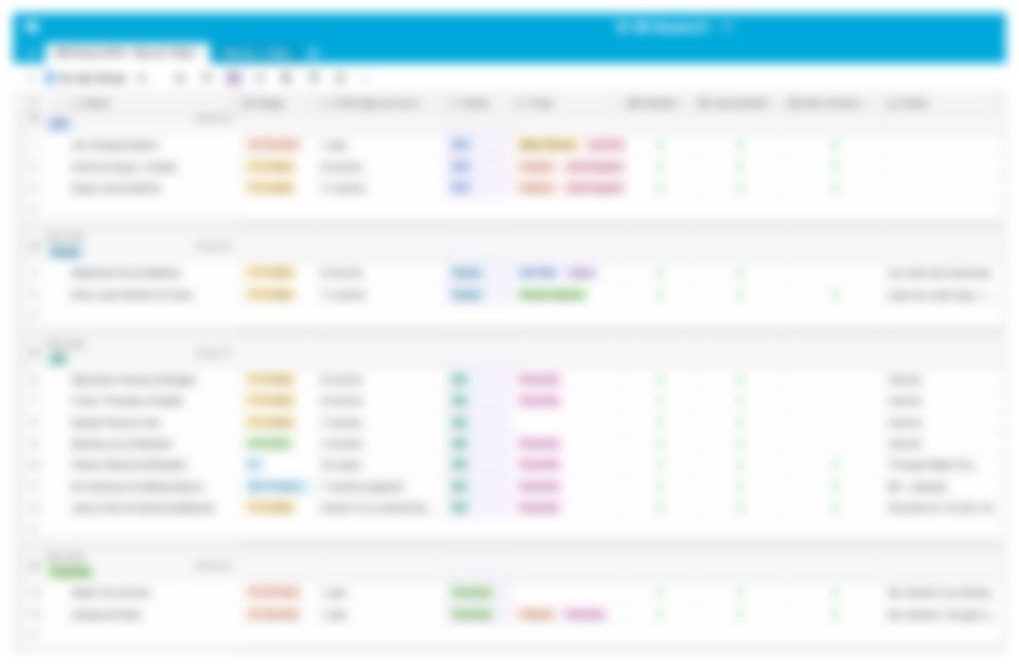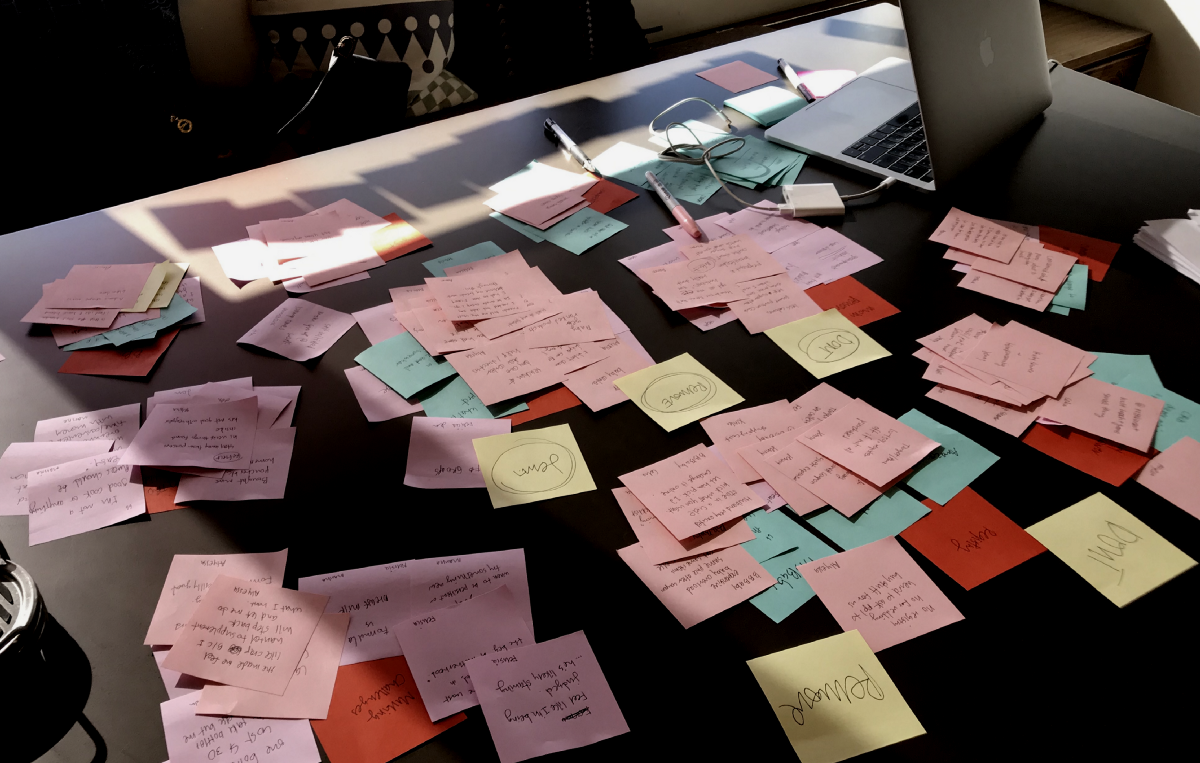Reflecting on my latest research hurdle and success! Sharing my experience driving this study from proposal to presentation, steps to execution, and the impact made on the business.
Context
It was over a year ago when the team shipped a rebranded and redesigned digital experience for a baby product. Results from that led to increased revenue and conversion, while demand for the product steadily climbed. Adrenaline was high for me then, but gradually declined as I reviewed the roadmap of usability improvements with new features sprinkled throughout. The incremental impact I could make was minimal in comparison to the burst of progress and team alignment present months ago. How might we drive the same challenge and mentality to prove more value for the business?
User Research
Designers know that research drives better design decisions, creating exponential impact over time. The value of research was ever-present in my mind but the UX discipline in my organization was new. Would my proposal be well-received? Will stakeholders agree?
I casually brought it up with my manager, but his immediate expression read “let’s focus on the priorities right now.” Understood, as this product was not #1. But I couldn’t let it go. Good insight drives design and iteration, propelling the ability to think creatively and create transformation. It was a long-term, patient investment that would fuel a breakthrough in creating gains. I shared these thoughts with a UX Researcher. He said:
You don’t need permission to do research. Just build it into what you’re already working on.
Basically — don’t separate it, integrate it. Luckily for me, the target audience was expecting and new parents — there were 5 of them in the office! I sent off meeting invites and developed a moderator guide. The guide helped level set my objectives, create structured dialogue, and remove bias with non-leading questions.
These initial 1:1 interviews became a beta test, refining my interview technique, note-taking methods, and opportunities for insight. It was a learning experience to balance building rapport with participants and maintaining an objective point of view. At the same time, my empathy and emotional connection heightened as I understood the complex, nuanced transition into motherhood. Unique personal journeys of biological changes and adaptation toward a nurturing, psychological mindset was shared with me. It hinted at the sensitive and personal journey I was inviting myself to be apart of.
After interviews, I mentioned to my manager that I was using moms and moms-to-be in the office as a resource (:subtle hint:). When the deck was completed, I shared with the team. The table of contents read something like this:
- Who did I speak with? anonymized, with stages of pregnancy or age of child
- Executive Summary
- Detailed Insights
- Action Steps — recommendations for optimization in the short, medium, and long term
Research Proposal
I came back to my manager with the report and presented a research proposal for external participants. The barriers were budget, resource allocation and incentives, so I addressed those points. To set expectations, I outlined the timeline, process and deliverables. I was committed, knowing I was the key driver of the study — screening, coordinating, recruiting, moderating, note-taking, analyzing, reporting, and presenting. The proposal provided a way to answer all anticipated questions, but also to make it easy to say ‘yes’.
Did it work?
Yes!
But after we refined the proposal.
Weeks later, while reviewing the final draft, my manager surprised me by requiring the “scope to be expanded”.
It was as if my internal thoughts echoed through a megaphone.
Am I hearing things?
Did he say, ‘expand..’?
What.. just.. happened?
🤭 I must have froze.
I internalized the inevitable struggle that accompanies research so preparing ‘for more’ was not a consideration. Sounds like a challenge and win 🙂

Doing the Research
- Moderator Guide
The study required speaking to people at different stages of pregnancy and throughout baby’s first year. Moderator guides came with attached version controls to segment participants and accurately set expectations dependent on baby’s age. Questions were different for segments and I had to familiarize myself with mommy language and terminology. Content included an introduction into the study, explanation of research objectives, my role, the structure of the interview, incentives, and addressed general concerns. I drew parallels between the interview and elements present in a story’s arc: introduction, rising action, conflict(s), climax, falling action and resolution. I’d set the context and find opportunities to probe for areas of conflict or pain points.
2. Participant Screener
I built the screener using a scrappy, free survey builder, Typeform. Since I’m not a mom, I asked my colleagues to “mommy proof” the screener language, tone and questions to be contextually relevant.
3. Recruiting
The screener was shared internally with friends, family, referrals. Though my audience wasn’t niche, it was difficult to build the velocity of contacts I needed, considering the natural drop-off. I used Airtable to keep track of contacts, follow-ups and next steps through the entire process.
4. Scheduling
Calendly made scheduling easy, with rescheduling options and automatic reminders. However, the availability of expecting and new parents required a lot of flexibility— odd hours through the week, weekends when child care was present, forgetfulness and balancing priorities. It was most effective to speak to a parent during their commute, or during work hours if they had a flexible schedule. If parents had more than one child, time was even more limited to squeeze in an interview.
5. Interviews & Note Taking
Freeing up all ten fingers was so important for speedy note-taking. Even the audio feedback of interviews helped place me into the context of parents’ lives — hearing baby cries and coos, subtle background sounds, dogs barking, whispered voices, the ebb and flow of traffic.
My research professor drilled in me how important it was to interpret and summarize research activities in the same day. The risk was losing details and altered information as time elapsed. Since the study took a few months, this habit done consistently highlighted the colorful details of a participant’s life and became pivotal in practice. I took interview notes on Word documents, saving constantly. After each interview, I jotted noticeable trends on a separate document, that became the foundation for my deliverables: deck, report, and personas.
6. Incentives & Follow Ups
Email templates make this area seamless. Good documentation in Airtable helped me cross-reference participants and status throughout the study. I had a template for rescheduling, closing the study, and incentive status.
Analysis & Reporting
I approached affinity mapping with caution, admittedly delaying it longer than I should have. It was a massive undertaking to cluster insights and visualize themes. Cal Newport defines deep work as “the ability to focus without distraction on a cognitively demanding task. It’s a skill that allows you to quickly master complicated information and produce better results in less time”. I moved to a temporary work space to foster deep work.
Parkinson’s Law states:
Work expands so as to fill the time available for its completion.
I scheduled the presentation first in order to time-box my analysis. That gave me a good chunk of time to analyze, create the report structure, design a visually engaging deck, and prepare speaking points for the presentation. It was easier said than done because affinity mapping was truly a struggle. Another researcher told me:
No one will know if you left anything out and you don’t need to include everything! You shouldn’t include everything.
That prodded me to ruthlessly and deliberately promote insights and demote others into the appendix.
I thought about the audience and objectives in presentation design. Advocating for UX and the value of research was a priority, along with key takeaways from the study. I would close with a Q&A forum and highlight appropriate data from the appendix. Distilling hours of research into a few highlights required immense brain power, but I settled on 5 very powerful themes.
To set the mood for empathy, I interspersed strong, memorable quotes throughout the presentation and asked attendees to read it out loud. My audience should experience snippets of the empathy I felt during the interviews! The presentation structure format was as follows:
- Intro & Context — UX, my role, this project & proposal
- 5 Key Insights
- Next Steps
- Appendix
Thank You Moms, Dads & New Parents
Talking to a stranger is a big, emotional investment. The most memorable interviews are the ones that captured moments of struggle. I had to balance a delicate line of asking why and probing without bias. At times, I modified my technique because these first-time parents felt a little defensive when I wanted to dig deeper. I was not judging their parenting style or life choices, but it came across that way. I learned of common emotional challenges from this life stage: nursing challenges, the formula vs. breast milk debate, child care guilt, the transition from maternity leave to work life, mom guilt for time spent away, and desire for adult interactions.
It was so insightful when a participant shared a moment of struggle — their engaged story, voice full of passion, reflective strength and poignant words to communicate an emotional state of mind and a moment in time. I’ve heard stories accompanied by tears and overwhelming feelings. This will only fuel and empower mothers to be excellent role models for their child(ren).
Thank you for trusting me and being open-minded. You’ve invited me into such an emotional period of your life and all I see is strength and courageous vulnerability. I feel so privileged to hear this information-the deepest, most painful parts of motherhood balanced with amazing and beautiful love.

Impact
This was a huge milestone and a company-wide Lunch & Learn highlighted its significance. I found an engaged audience in my colleagues and used it to advocate for UX, the value of research, and how it impacts the business overall. Attention can be used powerfully and I discovered new, collaborative ideas brewing from discussion.
For stakeholders: The insights helped drive product development and the future roadmap. On-boarding, acquisition, and retention ideas were fed into content marketing to elevate our strategy. Overall, our objective and targeting was a clearer match between the problem and solution.
For me: Tackling the entire study end to end stretched my abilities and gave me appreciation for the process and skills I’ve honed. My two biggest challenges and growth areas came from overcoming recruiting challenges and surfacing the most relevant insights from a mountain of data points.
I felt fulfilled in my role, translating insights into better design decisions. Though some were short-term gains, I’m confident that the long-term recommendations will garner more success.
Now, my next challenge — reminding and reiterating insights to the team😉
